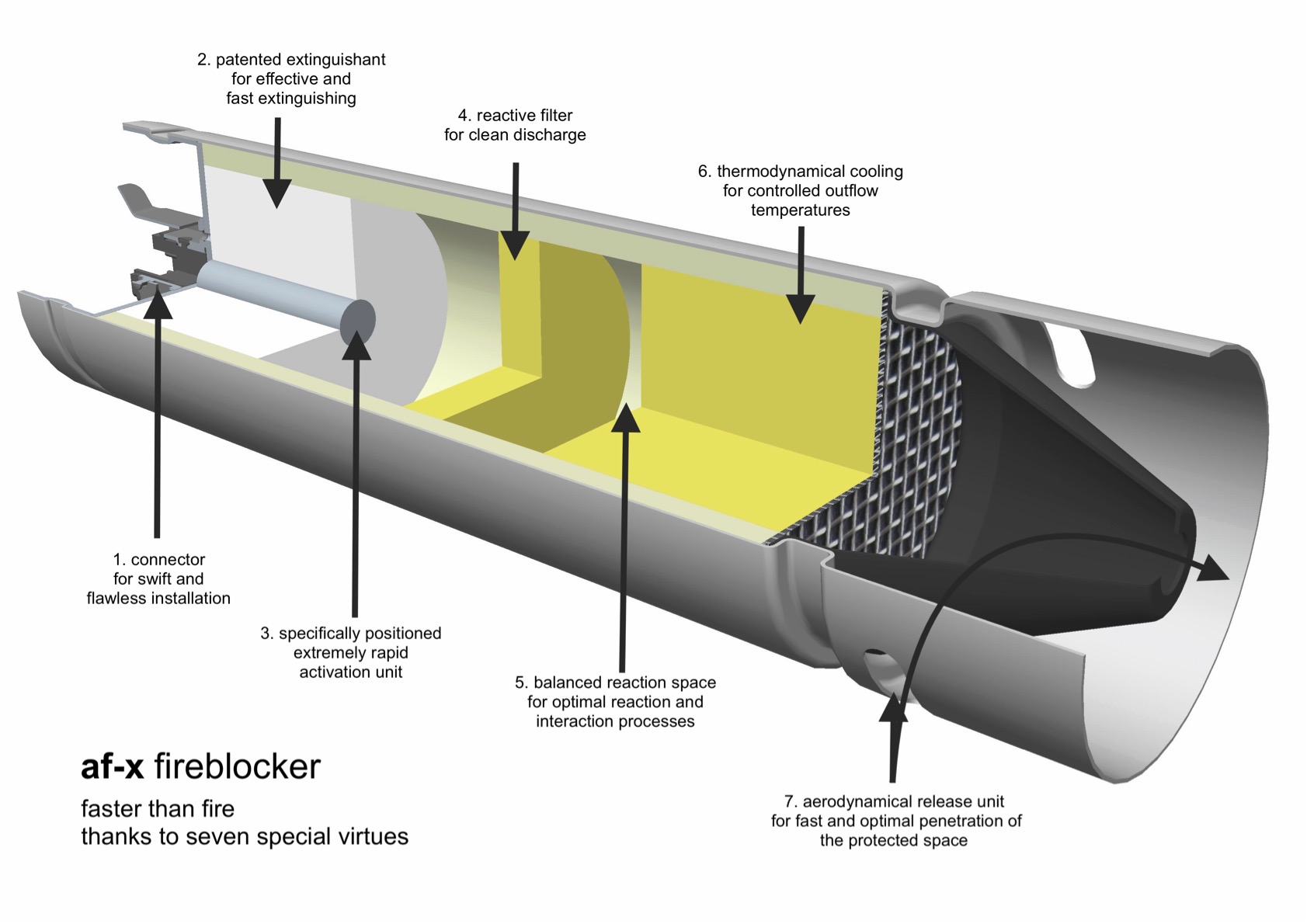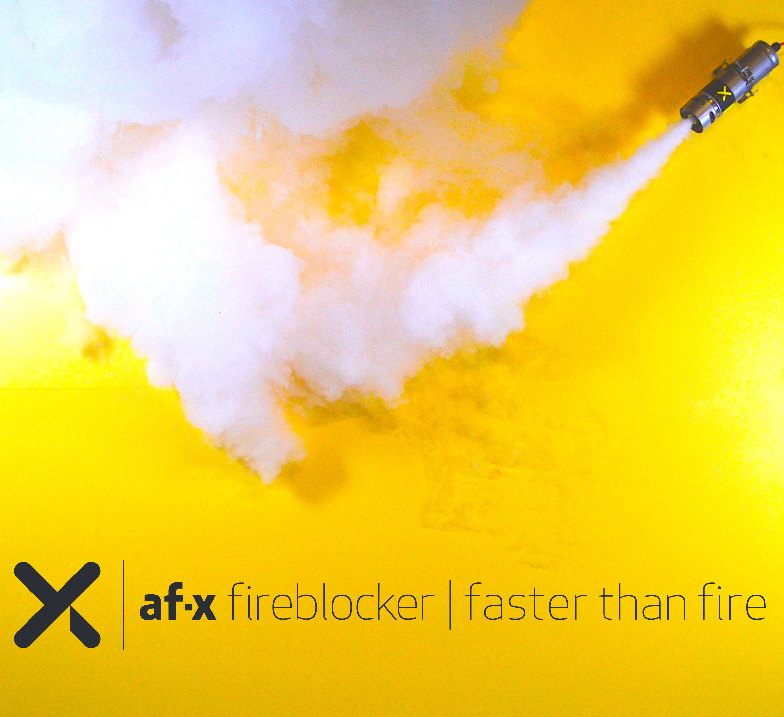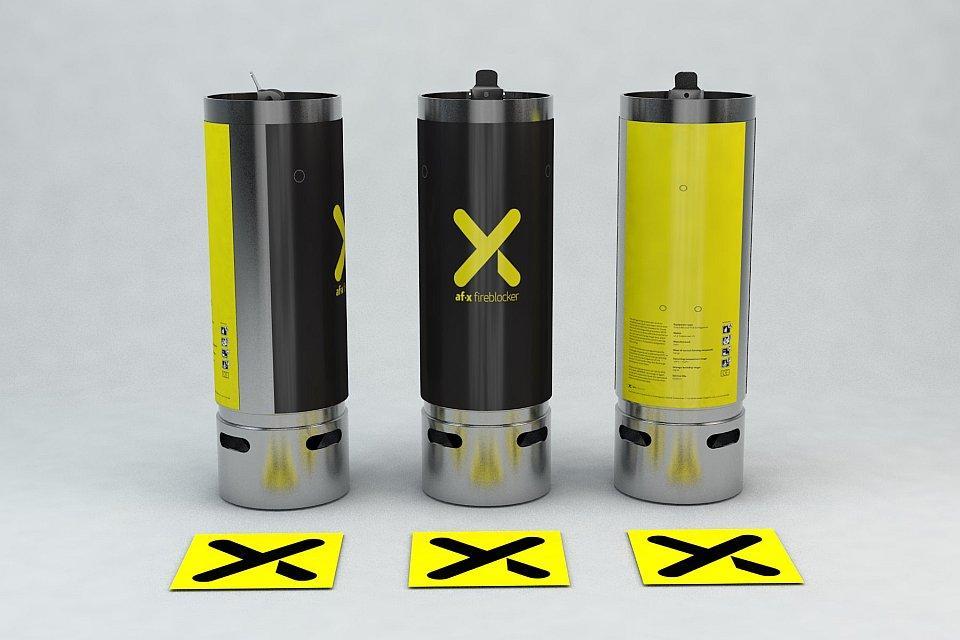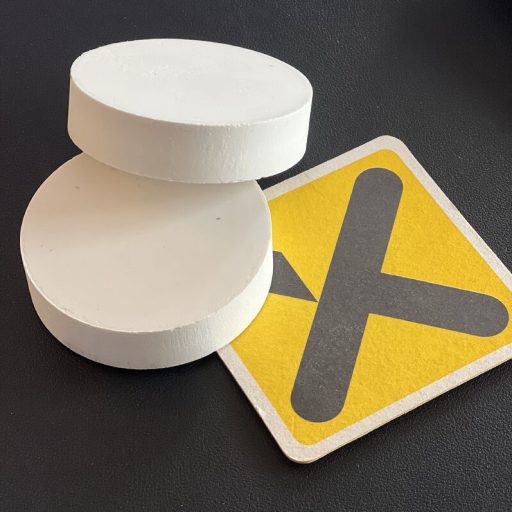AF-X Fireblocker manufactures, distributes
and markets a state-of-the-art & environmentally
friendly fire extinguishing system

AF-X Fireblocker – faster than fire
Aerosol fire extinguishing system
How does an aerosol extinguishing agent work?
AF-X Fireblocker generators have an extinguishing agent which is a solid aerosol-forming compound (see picture) in a non-pressurised generator. The aerosol is self-generated by a combustion process of the solid aerosol-forming compound, activated by an electrical ignitor.
The AF-X Fireblockers have a connector for the electrical control and activation mechanism of the extinguishing generators.
There is a grid on the outflow side for the gradual distribution of the extinguishing aerosol. The aerosol fire extinguishers can be activated automatically by means of thermal or smoke detection, but also manually.

The chemical transformation of the solid extinguishing compound is initiated by means of an electrical impulse.
Once activated, the solid compound is transformed into a rapidly expanding extinguishing aerosol which, after having passed a cooling section, exits through the outflow opening of the fire extinguisher and extinguishes the fire in the protected area.
Extinguishing principle
The aerosol generated by the Aerosol Fire Extinguishers and Fire Extinguishing Systems does not extinguish fires by using the methods of suffocation (oxygen removal) or cooling, but by stopping the combustion reaction on a molecular basis (by binding free radicals) without affecting the oxygen levels.
The aerosol is made of micro-sized particles. These particles are suspended in a gas, whereby the ratio between the exposed surface and the reaction mass is extremely high (so that the amount of active material required for quenching can be kept to a minimum).
IS THE AF-X FIREBLOCKER SYSTEM BEST SUITED FOR YOU?
Get in touch with us and our team will advise on a cost-effective and reliable solution for your industry and valuable assets.
Extinguishing Action
Aerosol Fire Extinguishers and Fire Extinguishing Systems produce an extinguishing aerosol by a chemical chain reaction without affecting the oxygen levels in the environment. The Extinguishing effect is triggered by two actions (Physical & Chemical)
How It Works
Once activated, the aerosol fire extinguisher initiate a reaction in which the released aerosol binds the free radicals.
This action extinguishes fire without depleting the ambient oxygen content. The solid particles of Potassium based (K) have a diameter of less than two ppm (parts per million) and remain in suspension in the protected room/enclosure for at least 30 minutes, preventing further re-ignition of the fire.

Physical Action
The physical extinguishing action arises from the chemical-physical characteristics. Compared to all other elements, these elements require the least amount of energy for ionization (lowest ionization voltage).
For this reason and because only a very small amount of energy is required, it is possible to separate the electrons from the atoms. The required amount of energy is provided by the abundance of energy present in the fire.
The ionization of potassium is evidenced by a light violet discolouration of the flame during extinguishing. The energy present in the flame is therefore reduced in accordance with the ionization voltage of the elements present.


Chemical Action
The physical extinguishing action arises from the chemical-physical characteristics. Compared to all other elements, these elements require the least amount of energy for ionization (lowest ionization voltage).
For this reason and because only a very small amount of energy is required, it is possible to separate the electrons from the atoms. The required amount of energy is provided by the abundance of energy present in the fire.
The ionization of potassium is evidenced by a light violet discolouration of the flame during extinguishing. The energy present in the flame is therefore reduced in accordance with the ionization voltage of the elements present.